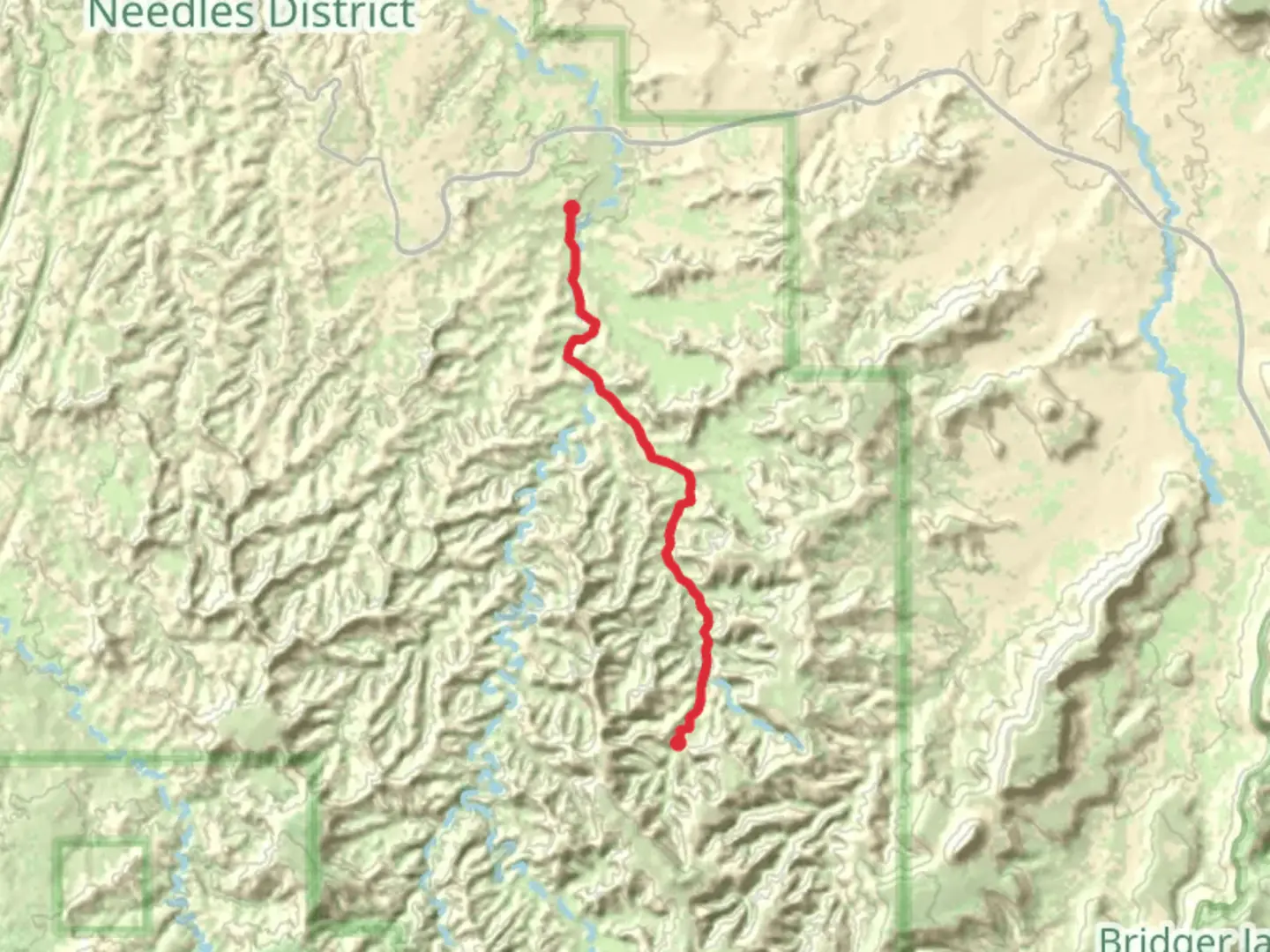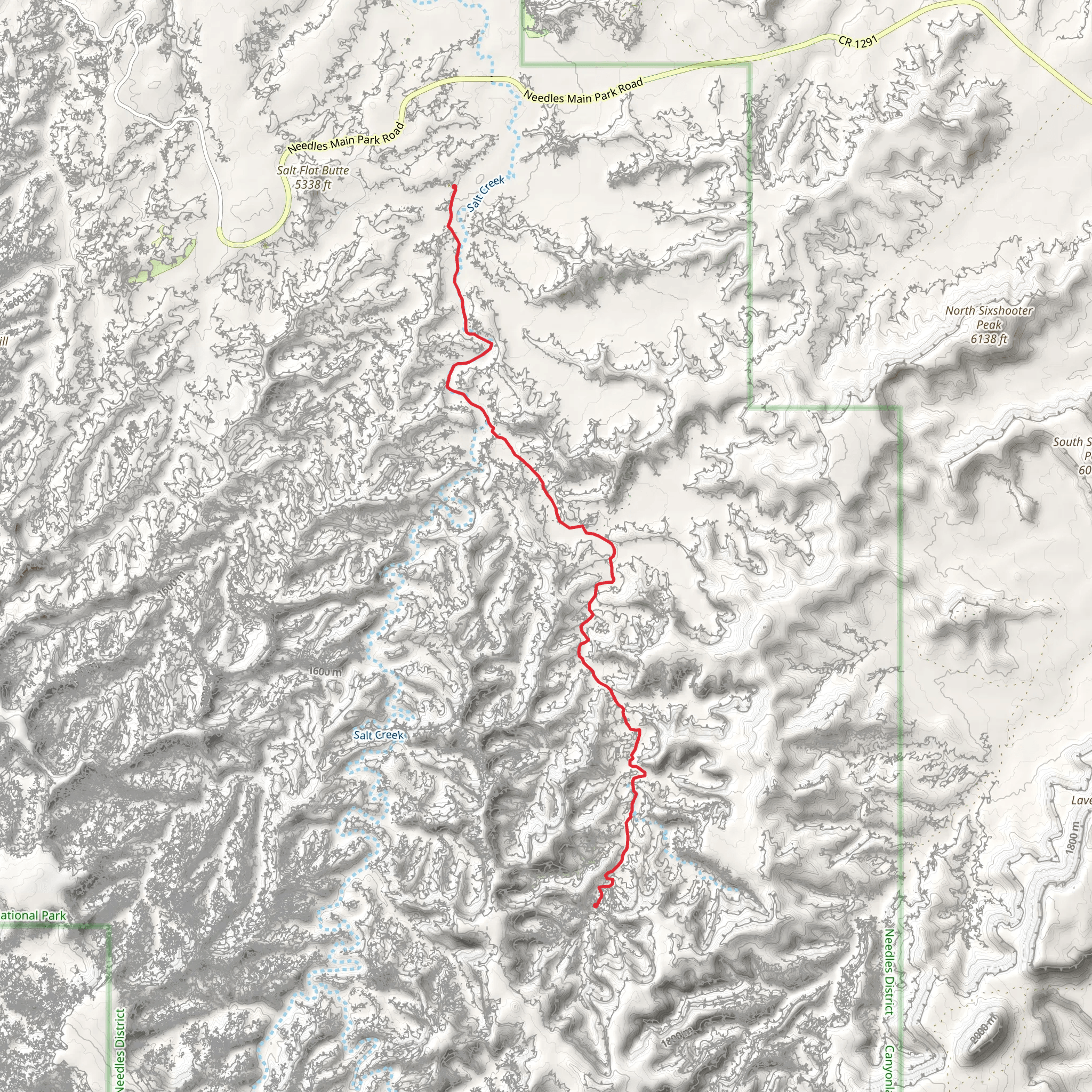
Download
Preview
Add to list
More
14.0 km
~3 hrs 15 min
272 m
Point-to-Point
“Explore Horse Canyon's 14 km trail for stunning vistas, ancient petroglyphs, and moderate hiking challenges.”
Starting near San Juan County, Utah, this 14 km (approximately 8.7 miles) point-to-point trail offers a medium difficulty hike through the stunning landscapes of Canyonlands National Park. With an elevation gain of around 200 meters (656 feet), hikers can expect a moderately challenging journey that rewards with breathtaking views and unique geological formations.
Getting There To reach the trailhead, you can drive or use public transport. If driving, head towards San Juan County, Utah, and follow signs to Canyonlands National Park. The nearest significant landmark is the Needles District Visitor Center, which is a good starting point for your journey. Public transport options are limited, so renting a car or arranging a shuttle service is recommended.
Trail Overview The trail begins with a gentle ascent, gradually increasing in elevation as you move deeper into Horse Canyon. The first few kilometers are relatively easy, allowing you to acclimate to the terrain. As you progress, the trail becomes more rugged, with rocky outcrops and narrow passages that require careful navigation. Using HiiKER for real-time navigation can be particularly helpful in these sections.
Landmarks and Points of Interest Around the 3 km (1.9 miles) mark, you'll encounter the first significant landmark: a series of ancient petroglyphs etched into the canyon walls. These petroglyphs offer a glimpse into the rich history of the Native American tribes that once inhabited this region. Continuing along the trail, you'll pass through a series of natural arches and rock formations, each more impressive than the last.
At approximately 7 km (4.3 miles), you'll reach the midpoint of the trail, where the canyon opens up to reveal expansive views of the surrounding landscape. This is a great spot to take a break and enjoy the scenery. Keep an eye out for local wildlife, including mule deer, bighorn sheep, and various bird species that are native to the area.
Flora and Fauna The flora along the trail is diverse, with juniper trees, pinyon pines, and various desert shrubs dotting the landscape. In spring, wildflowers bloom, adding a splash of color to the otherwise arid environment. The fauna is equally varied, with sightings of lizards, snakes, and small mammals common along the trail.
Final Stretch The final stretch of the trail involves a descent into a narrower section of the canyon. This part can be tricky, especially after rain, as the rocks can become slippery. Using trekking poles and wearing sturdy hiking boots with good grip is advisable. The trail ends at a scenic overlook, offering panoramic views of the canyon and the surrounding desert.
Historical Significance Horse Canyon holds significant historical value, with evidence of human habitation dating back thousands of years. The petroglyphs and other archaeological sites along the trail provide insight into the lives of the ancient peoples who once called this area home. The canyon itself has been shaped by millennia of geological activity, making it a fascinating destination for both history buffs and nature enthusiasts.
Preparation Tips Ensure you carry enough water, as the desert environment can be extremely dehydrating. A minimum of 3 liters per person is recommended. Sun protection, including a hat, sunscreen, and sunglasses, is essential. Given the remote nature of the trail, it's also wise to carry a first aid kit and inform someone of your hiking plans before setting out.
Using HiiKER for navigation will help you stay on track and provide real-time updates on your progress. This trail offers a unique blend of natural beauty, historical significance, and moderate physical challenge, making it a must-visit for any avid hiker exploring Canyonlands National Park.
What to expect?
Activity types
Comments and Reviews
User comments, reviews and discussions about the Walk along Horse Canyon, Utah.
4.5
average rating out of 5
20 rating(s)
